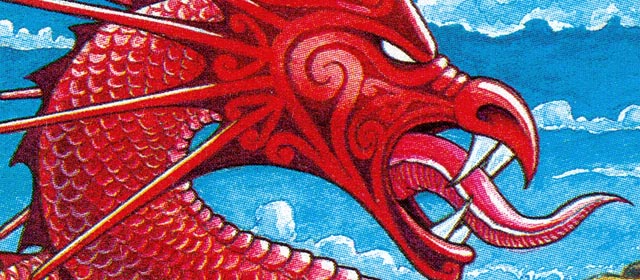Story summary
What are taniwha?
Taniwha are supernatural creatures in Māori tradition, similar to serpents and dragons in other cultures. They were said to hide in the ocean, rivers, lakes or caves.
Some taniwha would eat and kill people, or kidnap women. Others were believed to be guardians for a tribe, and people would offer them gifts and say a karakia (a spell).
What did they look like?
Some were like giant lizards, sometimes with wings. Others were reptile-like sea creatures. Or they took the shape of sharks or whales, or even logs of wood in the river. Some could change their shape.
Famous taniwha
The explorer Kupe had a guardian taniwha, Tuhirangi, who guided and protected canoes in Cook Strait. Much later, a friendly dolphin named Pelorus Jack swam with ships in this area. Some Māori believe Pelorus Jack was Tuhirangi in dolphin form.
The taniwha Tūtaeporoporo began life as a shark. A chief caught him and kept him as a pet in a river. Then Tūtaeporoporo changed, growing scaly skin, wings, webbed feet and a bird-like head. He began eating people travelling on the river. To catch him a taniwha slayer, Ao-kehu, hid inside a hollow log in the river. The taniwha smelt him, and swallowed the log. Slashing his way out of the taniwha’s stomach, Ao-kehu soon killed him. Inside the taniwha were the remains of people and canoes that he had eaten.
A female taniwha, Hine-kōrako, married a human. When his relatives insulted her, she escaped to Te Rēinga waterfall near Wairoa. But she still protected the local people. One day the river was in flood, and some travellers in a canoe came dangerously close to the waterfall. Hine-kōrako held back the canoe and saved their lives.
Taniwha today
In 2002 the Ngāti Naho people in Waikato opposed a plan for a highway. They said it would destroy the lair of their taniwha, Karutahi. As a result, the highway was built in a different area.
In Northland, members of Ngāpuhi opposed the building of a prison. They believed there was a taniwha, in the form of a log, in nearby waterways. They said the building would stop the taniwha from moving around. However, the prison was built.
Although not all Māori believe in taniwha, they are still important to many.





